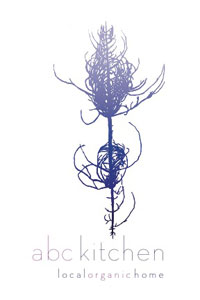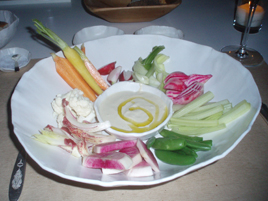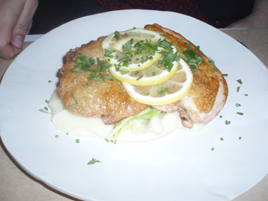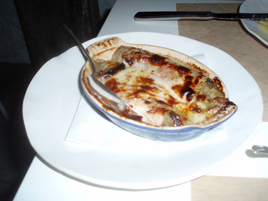Abe & Arthur's
 Friday, April 30, 2010 at 05:35AM
Friday, April 30, 2010 at 05:35AM Note: The owners of Abe & Arthur’s replaced it with La Cenita in 2013 and La Cenita Steak in 2014, before closing entirely later that year to become “an events and catering facility.” As of late 2014, the space was expected to become a branch of the Italian restaurant Tony’s di Napoli.
*
 Abe & Arthur’s is a Meatpacking District dining barn that opened last October in the old Lotus space. It accommodates more guests than a 747 jetliner.
Abe & Arthur’s is a Meatpacking District dining barn that opened last October in the old Lotus space. It accommodates more guests than a 747 jetliner.
Early reviews weren’t ecstatic, so the place wasn’t high on my list until Ozersky.TV filed on chef Franklin Becker’s unique way of preparing a steak. Briefly put: he quickly sears the meat at intense heat, then puts it in a hot butter bath, then finishes it once again under the broiler. The skeptical Ozersky was persuaded, and therefore so was I.
 I walked there after work and took a seat at the bar. The place was nearly empty at 5:30 p.m., but that quickly changed. A loud party of three guys came in, started telling lewd jokes to the barmaid, then ordered a magnum of red wine. It was going to be that kind of evening.
I walked there after work and took a seat at the bar. The place was nearly empty at 5:30 p.m., but that quickly changed. A loud party of three guys came in, started telling lewd jokes to the barmaid, then ordered a magnum of red wine. It was going to be that kind of evening.
While I waited for my steak, the server dropped off a bowl of warm popovers. They’re not as good as the ones at BLT Prime, but still better than the bread service that most restaurants settle for.
Becker sources his beef from Creekstone Farms, which supplies many of the high-end steakhouses. He offers a filet, a strip (which I had), or a porterhouse for two. The rest of the menu, mostly bistro standards, is expensive. If you don’t order steak, entrées range from a wild mushroom risotto ($27), to scallops and bacon ($34).
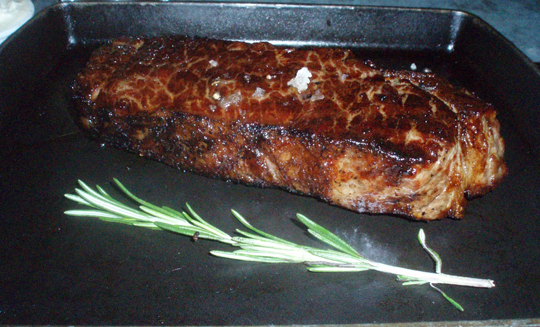
The steak itself, served on a sizzling cast iron skillet, is excellent. I prefer a bit more char, but there was just enough to supply a satisfying crunch with every bite. The dry-aged prime beef is as good as it comes, and it was prepared expertly to the medium rare I requested.
It is not, however, as good as the city’s current gold standard, the bone-in strip at Minetta Tavern, which currently sells for $45. That’s four dollars more than at Abe & Arthur’s, but Minetta is a much more satisfying restaurant overall. Of course, the fact that you can get into Abe & Arthur’s weighs in its favor.
Service was friendly, but frantic. Once the bar started filling up, it was not easy to get the over-taxed barmaid’s attention. Unlike Ozersky.TV, I do not have the benefit of a private audience with the chef. The steak certainly lived up to Ozersky’s endorsement, but I won’t rush back. It isn’t an especially pleasant place to dine, and there are other restaurants that can satisfy a steak fix equally well.
Eater.com reported that the owners are hoping to open three more Abe & Arthur’s restaurants in Manhattan. That sounds like over-expansion to me, but what do I know?
Abe & Arthur’s (409 W. 14th St. between Ninth & Tenth Ave., Meatpacking District)
Food: *
Service: Satisfactory
Ambiance: Satisfactory
Overall: *




















